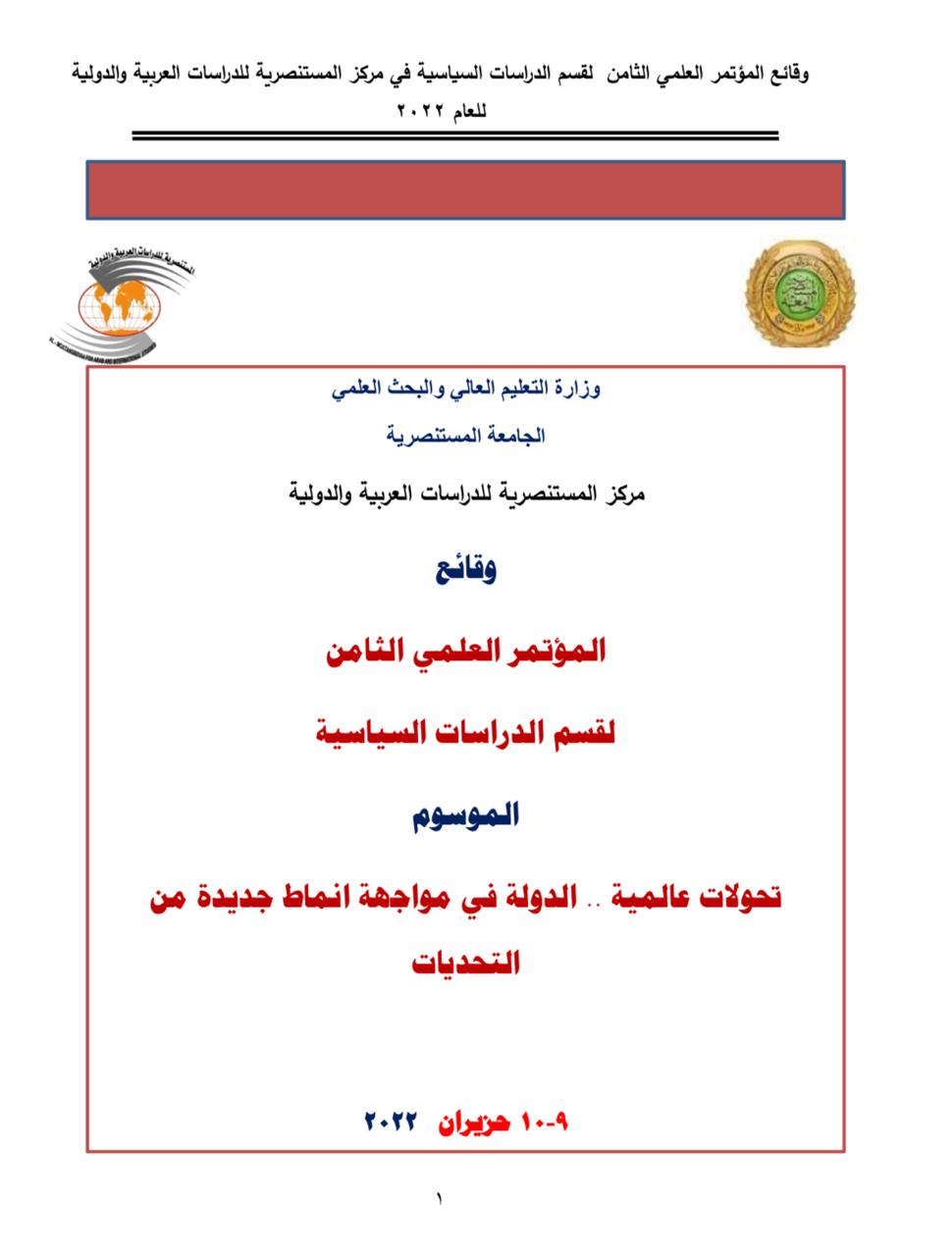Abstract
The structural and value changes and transformations that the global environment witnessed after the end of the Cold War in 1991 and the decline of the stage of ideological conflicts, contributed to drawing a global community characterized by ambiguity, complexity and interdependence at that time, and led to the different nature and map of new security threats and their transition from the traditional pattern to a new pattern known as Asymmetric threats, also known as asymmetric or asymmetric threats, World War IV, and unrestricted warfare. And the asymmetric war, which was followed by the events of September 11, 2001 and the American invasion of Afghanistan and Iraq, which greatly affected the international system, and the emergence of new concepts, theories, actors and security threats that transcend the sovereign military scope of the nation-state and began to compete with the state over its sovereignty and the exposure of state sovereignty, which prompted many thinkers like “ Barry Buzan and Ole Waever to formulate new security theories and thought propositions commensurate with these non-traditional threats by saying, "We must transcend the narrow thinking of security and security threats, which has become confined to state security and military security, and expand this thinking through research About new actors threatening security and new security threats. As a new type of the fourth generation of wars, which has evolved into a new form known as "hybrid threats", which is a new type of fifth generation wars, which produced "hybrid strategies" and the need to formulate new theories of international national security to confront them emerged, as a result of complexity and ambiguity And mobility, which has come to affect the most important foundations and phenomena of international relations, which is global security, as it is a mainstay of the international community, which is under threat due to progress in the information and knowledge field.
From this point of view, which is of importance in its intellectual and security premises, the research will answer the following main question: (All of these security threats imposed on the United States a reassessment of its military strategy in proportion to the new security challenges that it may face in the foreseeable future, so it created a new strategy for it And different, unconventional ones to confront its enemies and achieve its undeclared goals, given that the parties to the conflict are aware of the nature of the tools and mechanisms they used in the second Gulf War in 1990, especially after their military strategy was subjected to failure and penetration after the events of September 11. 2001.By proposing new unfamiliar strategies for its opponents to enhance its position and hegemony over the international system by proposing a strategy of deterrence with skepticism-preventive). )
We based our research on the following hypothesis (that asymmetric wars are asymmetric and unconventional wars, and one of the new security threats that emerged after the events of September 11, 2001, as a new type of fourth generation of modern, asymmetrical, asymmetric wars and occurring between actors who have One of them is the state and the other actor is an unknown terrorist group that is unequal in means, organization, capabilities and strength, and adopts a strategy based on the element of surprise, surprise, mobility, secrecy, ambiguity, and the inability to determine the nature and identity of the enemy, and striving to create a long-term unequal conflict. It involves three levels, including the first level, the field level. It involves covert operations, kidnapping, treachery, and others, while the second level, which is the military strategic level, involves lightning operations and guerrilla warfare. Proxy, illegal immigration, terrorist operations, organized crime and Other.
Keywords: non_ linear wars _ asymmetric threats _ asymmetric wars, _ indirect approach strategy, asymmetric threats _ deterrence with doubt, preemptive _ preventive.
